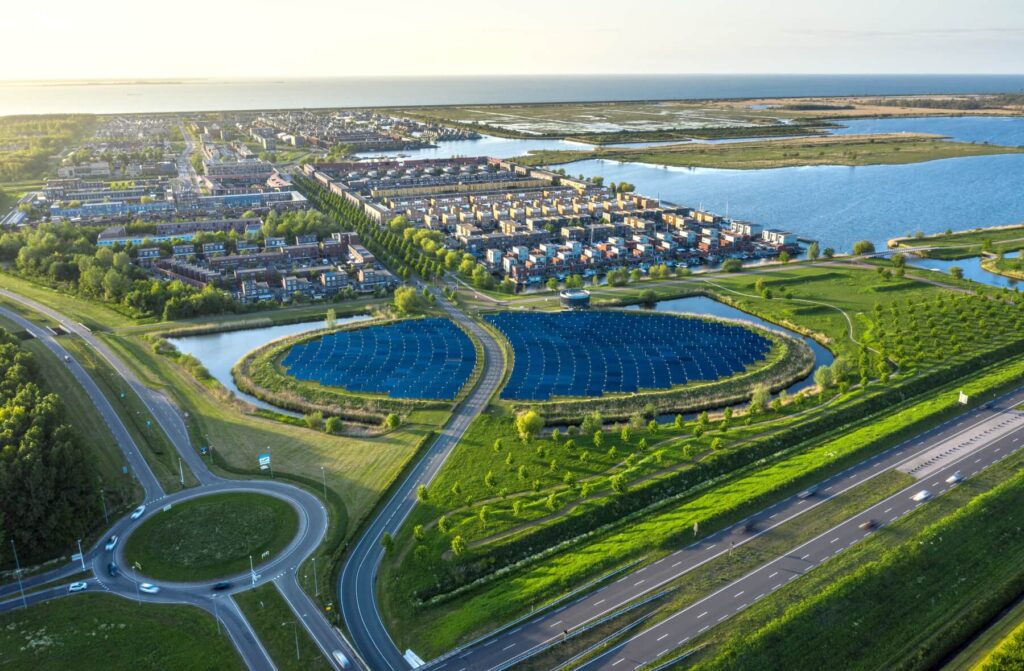The net zero transition is core to being a responsible business and should incorporate circular economy strategies, leverage cross-sector partnerships, center justice and inclusion into plans, and demonstrate progress through the ESGs to ensure the transition benefits business and society.
Dr. Ellonda Williams, Director of Justice, Equity, Diversity, and Inclusion (JEDI) at B Lab, a non-profit that certifies B-corps, explained that ensuring that justice is at the center of transition plans will not be easy, but it is necessary. “Putting people and justice at the center of business efforts to address the climate emergency will be no easy feat, but it must be done. Climate activists have been trying to solve the climate crisis for nearly 50 years, but have barely moved the needle because they have not collectively centered the people and lived experiences of those most affected to build solutions together. This next decade—the Decade of Action—is pivotal for climate action, and the pathway to effective climate action is to listen to and incorporate the wisdom of the people and communities most impacted. We have to work collaboratively to create the sustainable and just future we want; not in siloes, and not through the paternalistic, colonialist, and saviorist methodologies that got us here.”
This next decade—the Decade of Action—is pivotal for climate action, and the pathway to effective climate action is to listen to and incorporate the wisdom of the people and communities most impacted.
Dr. Ellonda Williams, Director of Justice, Equity, Diversity, and Inclusion (JEDI) at B Lab
To Dr. Williams’ point, companies’ plans to transition to net zero emissions should not only be about emissions targets and circular business models. Additionally, justice and inclusion should be centered in net zero transition plans to help ensure that the transition delivers prosperity for all and reduces inequities rather than exacerbates them. This is because when communities thrive, business thrives. According to Edelman’s 2020 report, 87 percent of companies say all of their stakeholders (communities, employees, and customers) are important to their long-term success and 73 percent agree that companies can take actions to both increase profits and improve conditions where it operates.
We have already seen what happens when racism—not justice—is at the center of the growth of industry. Robert D. Bullard, considered the father of environmental justice, concluded in a landmark 2007 study that in the United States, race was the most significant predictor of commercial hazardous waste facility locations. As a result of the proximity to these facilities, low-income and communities of color often suffer health issues such as asthma, cancer, and respiratory disease.
The transition to net zero must also be inclusive, otherwise it risks furthering systems that do not benefit all. More recently in the transition to renewable energy a 2019 study by Tufts University found that of white and Black households with the same median income in the U.S., majority-Black communities had 69 percent less solar installed than tracts with no racial or ethnic majority, while white-majority tracts had installed 21 percent more. While the study has not yet determined the root causes of the differences, they cite that failing to include all segments of society can dramatically weaken the benefits of an emissions reduction tool like solar.
Failing to include all segments of society can dramatically weaken the benefits of an emissions reduction tool like solar.
Companies can center justice and inclusion in their net zero transition plans in a variety of ways. According to B Lab’s Climate Justice Playbook for Business: How to Centre Climate Action in Climate Justice and BSR’s “The Business Role in Creating a 21st Century Social Contract’, companies can:
- Identify the communities that will be the most impacted by their net zero transition;
- Engage with staff, customers, and community members to listen and understand how their business impacts communities directly or indirectly and commit to acting on the negative impacts;
- Build or join an inclusive coalition that has representation from all sectors, but most importantly prioritizes often overlooked, underheard, or excluded voices;
- Engage in dialogue with government and civil society to inform and influence policy to ensure the costs of the transition are not passed to low-income populations;
- Evaluate and change supply chains to support the communities in which their suppliers live and work; and
- Generate inclusive low-carbon employment opportunities and manage the impacts on workers transitioning from high-carbon roles.
Companies are already innovating on how to raise awareness amongst their employees about their business impacts on the environment and engaging communities that their businesses impact in more meaningful ways. Take for instance PYXERA Global’s Circular City Coalition. This is a coalition of members including Closed Loop Partners, SAP, Enel, Rheaply, Volans, Metabolic, and others, that are designing community-based programs that prioritize historically marginalized communities in each geography their companies operate in, with a focus on economic mobility.
Some companies are even beginning to motivate their employees to think about new circular business models through participating in skills-based volunteering programs. For example, 3M’s skills-based volunteering program, called 3M Impact, is building upon its sustainability commitments by matching employees to projects with community-based organizations that are designed to support “3M’s Strategic Sustainability Framework, advancing its commitments to Science for Circular, Science for Climate, and/or Science for Community.” According to Pyxera Global’s 8th State of the Practice Report, about 10 percent of skills-based volunteering programs consider circular a top impact area. As companies prioritize net zero and climate action, the number of companies focusing on circular economies will only grow.
Net zero transition plans that incorporate justice and inclusion have the potential to help build a better, more equitable world where everyone has access to a healthy environment and decent livelihood.

